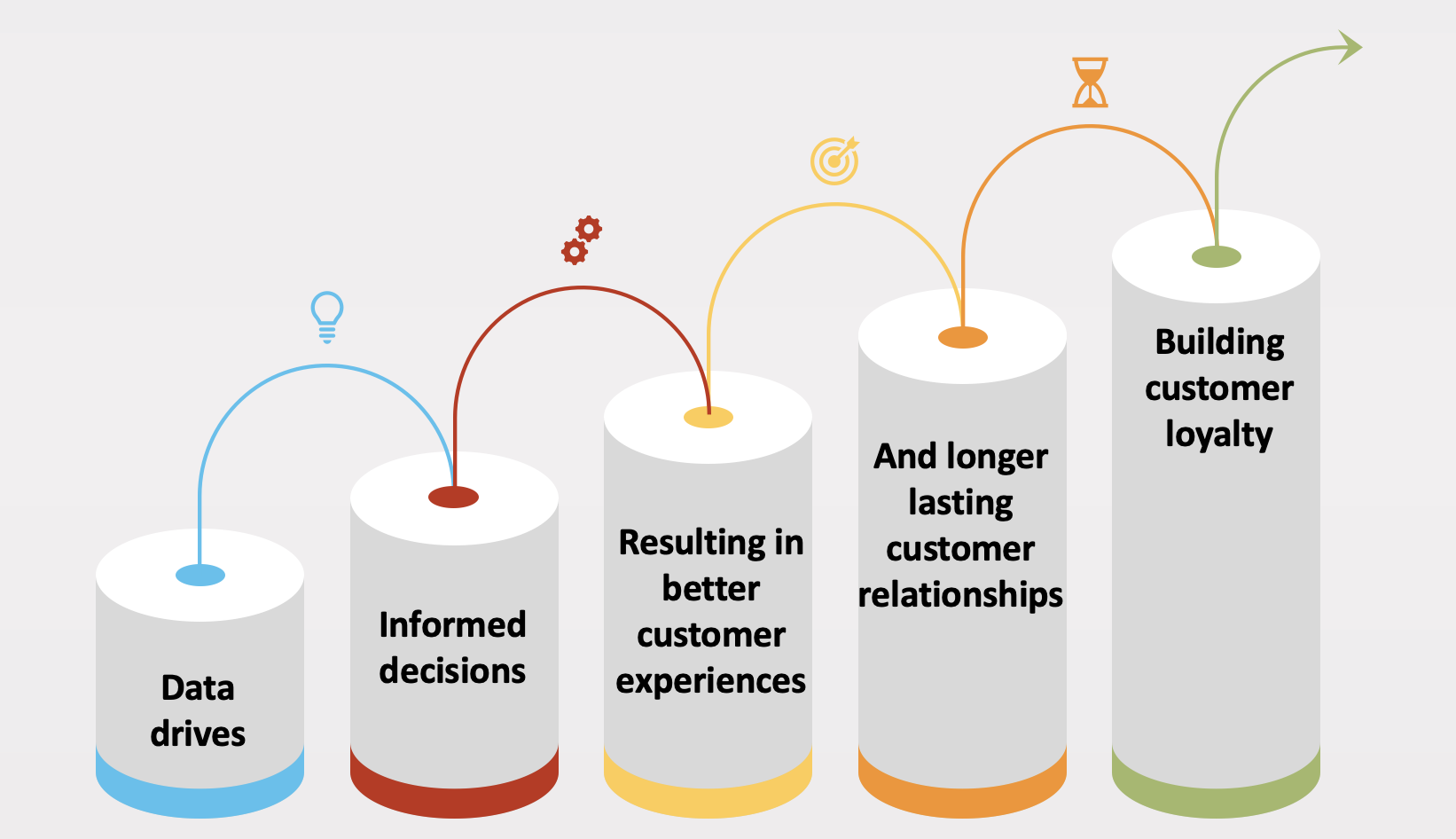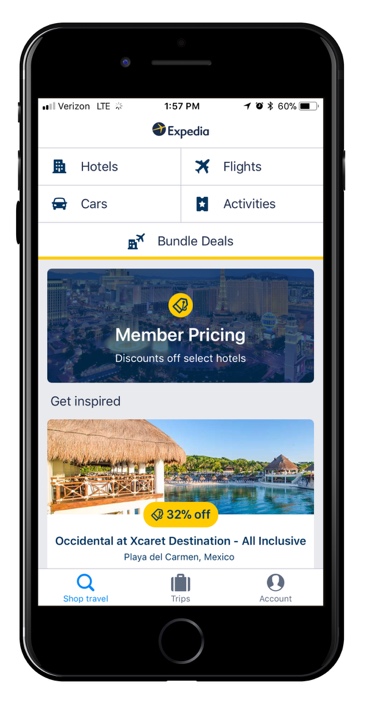If you’re a business owner or marketer, you know that there are a plethora of channels you can use to market your brand today. But, some of those marketing channels have become more popular than others. For example, automated text message marketing campaigns are preferred over email campaigns – because SMS messages have a much higher open rate, and recipients tend to interact with a text message more than emails.
This is why using SMS messages to promote your business and its products/services is so successful for many companies today. When you plan and roll out or implement your text marketing campaigns efficiently, you will see an increase in audience engagement and, consequently, business revenue. Text messages are convenient, quick, easy to manage, and measurable when using text marketing software. It’s an excellent tool if you’re looking to foster relationships and build customer loyalty.
But before we look at how to build customer loyalty, let’s get down to the basics of opt-in text messages and what they are.
What are opt-in text messages?
An opt-in text message is when a recipient gives written consent to receive promotional and other marketing-related information from a particular company or organization. When someone elects to “opt-in,” it means that they acknowledge and are okay with receiving promos, alerts, or notes from a business. Companies can only communicate with people via SMS once they’ve opted in.
Once a person has opted in, they should be informed of the following:
- The business name that will be texting them.
- How frequently they should expect texts from that company, i.e., once or twice a week, twice a month, etc.
- What type of content should they be expecting from readers? E.g., promotional material, order updates, etc.
There should always be an opt-out option for subscribers, too. You’ll often see this as “Reply STOP to opt-out” at the end of a text message.
Why is Business Intelligence Important?
In today’s world, customers expect brands to understand their needs, desires, and preferences fully. This is where business intelligence comes in. By using business intelligence, companies can gain a deeper and more dimensional understanding of their customers – their behaviors, habits, and preferences.
This can be done by analyzing customer data and using this data to identify trends and patterns. When this insight is transformed into actions, businesses actively and dynamically change how they do business and serve customers based on client feedback. This improves overall customer experiences and drives customer loyalty.
Below is a depiction of this flow:

Design by PresentationGO.com
Understanding Customer Loyalty
Now that we know how business intelligence fits into the picture let’s look at customer loyalty in more detail.
1. What is customer loyalty?
Customer loyalty is defined as a constant and positive ongoing relationship between a brand and a customer. This is what drives repeat purchases and retained customers. It also prompts customers to select your business over a competitor who offers a similar product, service, or feature set. This should happen automatically if customers are loyal because they trust your brand over others in the industry.
It’s important to note that loyalty is not achieved after one or two sales of your product or service. Instead, loyalty occurs due to many interactions with your brand and purchases from it. This repeated feeling of fulfillment builds trust between the customer and the business over time. And that is when customer loyalty begins to unfold.
2. The importance of customer loyalty for businesses
Below are a few key reasons why customer loyalty is pivotal to your business:
1. Loyal customers become more than customers – they become brand ambassadors:
Establishing customer loyalty is important because it helps transform customers into brand ambassadors – which all businesses want to achieve. What’s better than your customers selling your brand and products for you, right? WOM (word of mouth) marketing is still the most powerful marketing tool today, and your brand ambassadors can be the sound of your brand to others. Customers who become brand ambassadors have complete faith in your company and will naturally refer people to it. This is the true beauty of customer loyalty.
2. Customer loyalty promotes and encourages regular clientele and business:
We’ve established that loyal customers believe in a brand. But loyal customers also mean consistent business from these clients. This is usually due to high loyalty and the use of loyalty programs – the more you buy, the more you get rewarded. If you think about things like the Starbucks loyalty rewards program, you’ll notice that there’s always something in it for the client. This makes it intriguing and makes customers want to return for more. Regular business also means increased revenue from loyal clients.
3. Customer loyalty creates excellent focus groups:
If you ask your most loyal customers for feedback, they will likely provide it. You can use customer surveys, reviews, and ratings as good indicators for what your clientele is happy with and which areas they would like improvement on. It’s a good idea to ask your most active and loyal customers to participate in these surveys to help your business improve over time. These surveys can be shared via text or email using text message marketing software to manage the entire process.
3. How opt-in text messages can help build customer loyalty
Opt-in text messages can be a powerful tool for communicating with customers and building customer loyalty. This is because it is a highly accessible medium that allows customers to engage with brands quickly and effectively. Unlike email and social media, SMS has a high open rate and adds a personal touch to communications. But the main element of opt-in text messages is creating a complete and robust SMS marketing strategy. This will allow your brand to tell a cohesive story to clients via opt-in text messages – building a sense of community. This creates long-term relationships between business and customer, eventually resulting in loyal customers.

Creating an Opt-In Text Message Campaign
Step 1: How to obtain opt-ins from customers
You must obtain written consent from a person before communicating with them via SMS. But this is not always as easy as it sounds. So, how can you get consent and get customers excited about your SMS marketing campaigns?
- Simply ask: Sometimes, simple is the way to go. Just ask your customers when you interact with them! You can do this in-store or via digital channels like your website or social media profiles. If you already have a customer base by email, ask them there, too. Keep the ask short, sweet, and to the point.
- Tie it in with a promo or giveaway: You can use a flash sale, exclusive promotion, or giveaway to get customers excited about opting in. The idea here is to give away something like a discount coupon exclusively via text. Let them know this is the only way to access this coupon. This creates a sense of community and exclusivity for clients, getting them excited about promotions and prizes. It’s a great way to boost engagement and positively obtain opt-ins.
- Ask them at checkout:
If your customer has just purchased a product (in-store or online), it’s an excellent time to gain an opt-in. They’re excited about your product and brand, and the chances of them signing up for something like text message marketing campaigns are relatively high. It’s a good idea to take advantage of the positive vibe.
Step 2: How to craft a compelling opt-in message
There are many ways to write an effective opt-in message. But here are a few pointers you should add to every message to ensure optimal results every time:
- Identify yourself: Always state your business name to ensure the person knows who the text is from.
- Be concise: Keep it short and sweet. Have one solid message, and don’t convolute the critical topic with other information.
- Have a CTA: Include a clear call to action. This can be a link or a message like, “Reply YES to opt-in.”
- Make it easy: Make sure your CTA is easy to understand and complete. Leave no room for confusion.
- Explain why: Show the person why they should opt in. Show them the benefit of it by answering the question, “What’s in it for me?”.
- Avoid jargon: Don’t use ambiguous or long-winded language. Get the point across as simply and quickly as possible.
Step 3: How to create strategies for maintaining a high opt-in rate
Once you’ve started receiving opt-ins, you must maintain a high rate. You can do this by having a regularly-running opt-in strategy. This strategy should include some of the following tactics to ensure success:
- Offer incentives: Offer people an exclusive discount, coupon, or gift when they join.
- Ask your email subscribers: Add an opportunity to opt-in for SMS marketing via email. You can add this at the footer of your emails.
- Promote it on various channels: Push your SMS marketing benefits across all social media platforms.
- Use your website: Use pop-ups and add an option to opt-in for texts in strategic areas such as the thank you page or checkout page.
- Implement “text to join” campaigns: Prompt people to join the SMS opt-in list by texting a word to a specific number. E.g., “Text JOIN to receive SMS messages from ABC Brand and unlock your exclusive offer now!”
Best Practices for Opt-In Text Message Marketing

Step 1: The importance of personalization
Personalization forms a considerable part of SMS marketing because it helps you create targeted and tailored messages for individuals. You create personalized messages by using customer data and then creating messages tailored to an individual based on that data. For example, you can include their name in the message or tailor a note according to their recent purchase history. This makes clients feel more appreciated and valued by your business. Personalization is becoming increasingly popular in marketing today.
Step 2: Timing and frequency considerations
Managing how often you send texts and what time of the day you send them is crucial because you need to ensure you stay favorable with your audience. Nobody wants a brand bombarding them with messages at inappropriate times. So, try to stick with the best times for your audience. You can test this by initially sending messages at varied times and frequencies and then using the times that have worked best for your customers.
Step 3: Creating relevant and valuable content
The next best practice for opt-in text message marketing is all about content. That’s right – without a solid content strategy, your SMS marketing campaigns could result in being ineffective – which could cause opt-outs. This is why content is so crucial. Your texts, even though short, should be punchy enough to impress. But at the same time, they should also be part of a larger story. You can create several pockets of content within one campaign that all come together to take the subscriber on a journey with your brand. This keeps recipients engaged and helps them build trust and loyalty with your business.
Step 4: Tips for measuring the success of your opt-in text message campaign
You must monitor KPIs (key performance indicators) for every SMS marketing campaign you run. Once the campaign runs, monitoring and optimizing it continually is vital. You can do this by measuring some key metrics using text message marketing software. Some of these metrics are:
- Conversion rates – the average number of conversions you get per SMS interaction.
- Read rates – The number of subscribers who opened and read the SMS message.
- Click-through rates (CTR) – The ratio of clicks on links to SMS messages sent.
- Opt-out rate – The number of subscribers unsubscribed from your text message marketing program.
Case Study of a Business Using Opt-In Text Messages to Build Customer Loyalty
Case Study: Expedia SMS Marketing Campaign
Expedia is a leading travel planning site that boasts an incredibly well-designed app for customers planning their next trip. They have over 25,000 employees today and help consumers book hotels, flights, car rentals, vacation packages, and more.
The Objective
The company wanted to increase engagement and grow user numbers via SMS marketing campaigns. They wanted to do this by partnering with VisitBritain, a British national tourism agency. The aim was to invite people to Britain and promote its tourist attractions.

Source: Expedia
The Solution
Expedia sent personalized offers to travelers who had actively searched for trips to Britain via their site or app. Each SMS had a specified URL to get more details on the deal. Expedia would SMS them with UK travel tips during a traveler’s journey. The texts were designed to be customized to the person’s preferences and location.
The Results
Personalization went a long way in this campaign. Expedia generated 17,000 clicks for the URL included in the texts. The company also achieved a 28% conversion rate for this campaign.
Conclusion
As you can see, personalization in SMS marketing can be extremely powerful. At Gleantap, we understand that and fully believe in letting the data inform your decisions. Our platform offers email and text message marketing management. In addition, Gleantap has other features such as automation, template generation, reporting and analytics, etc. This helps your business grow from strength to strength and enables you to build efficiencies where possible.
If you’re ready to build a solid opt-in campaign, schedule a demo with us today.
FAQs
1. How can opt-in text messages help build customer loyalty?
Over time, you build trust with opted-in contacts because they want to hear from you actively. This results in more frequent purchases, more referrals, and customer loyalty.
2. What types of content should be included in opt-in text messages?
Always state your business name, the point of the SMS, and a CTA. You can use text, links, and images in opt-in text messages.
3. How frequently should businesses send opt-in text messages to customers?
You should aim for between once or twice per week at most. Always communicate the frequency to your opt-in contacts so they’re aware of it and agree to it.
4. How can businesses obtain opt-ins from customers?
Promote your SMS marketing campaign in other spaces, such as in-store, on your social media channels, and via email. Consumers must actively opt-in, with their consent, to receive texts.
Get the full story here:


